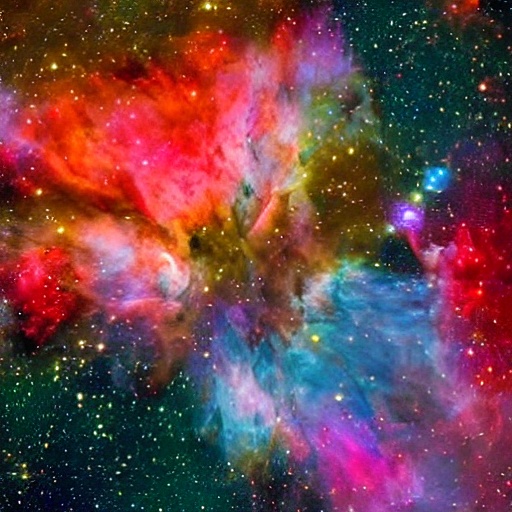
How have recent advancements in telescope technology improved our understanding of nebulae?
Recent advancements in telescope technology have revolutionized our understanding of nebulae. The use of infrared radiation in telescopes like the James Webb Space Telescope has allowed astronomers to see through the dense layers of gas and dust, revealing the hidden structures within nebulae. These detailed observations have provided valuable insights into the physical processes that shape these celestial objects, including the dynamics of gas and dust clouds, the formation of stars, and the mechanisms behind the stunning visual displays of color and complexity in nebulae.
What role do nebulae play in the life cycle of stars?
Nebulae play a vital role in the life cycle of stars. They are the birthplaces of stars, as the dense clumps of gas and dust within emission nebulae provide the necessary materials for star formation. Gravity causes these interstellar clouds to condense, forming protostars. As these protostars continue to gather mass, they become stable stars. As stars evolve, they release clouds of gas, creating planetary nebulae. These nebulae mark the final stages of stars like our sun, as they cool down and collapse to become white dwarfs. Additionally, more massive stars explode as supernovae, leaving behind remnants that shape the surrounding space. The study of nebulae has allowed astronomers to understand the intricate relationship between stellar evolution and the role of nebulae in the universe.
What insights have astronomers gained from studying planetary nebulae?
Astronomers have gained valuable insights from studying planetary nebulae. These nebulae provide a glimpse into the final stages of a star’s life and offer clues about the mechanisms behind stellar evolution. By analyzing the composition and structure of planetary nebulae, astronomers can determine the chemical elements involved and the processes that occur during the star’s death throes. For example, studying the abundance of elements like oxygen and nitrogen in planetary nebulae has revealed information about nucleosynthesis, the process through which elements are formed in stars and released into the universe. Furthermore, the study of planetary nebulae has contributed to our understanding of stellar mass loss and the feedback mechanisms that drive the dynamics of galaxies. Overall, planetary nebulae are valuable astronomical laboratories that provide valuable insights into the processes that shape the universe.
Full summary
The world of nebulae is full of stunning discoveries and fascinating phenomena. Recent research and observations have unveiled new insights into these celestial objects, shedding light on their formation, structure, and role in the universe.
One of the most captivating recent findings comes from a team of astronomers who released a series of stunning images showcasing the intricate details of a nebula's expanding colorful shell. These images provide exquisite clarity of the inner region around the central white dwarf, revealing previously unseen features. The beauty and complexity captured in these photographs truly showcase the awe-inspiring nature of nebulae.
Nebulae, often described as 'cloud-like' when viewed through a telescope, have a rich history and diverse characteristics. In the past, the term 'nebula' encompassed galaxies such as the Andromeda nebula. However, modern telescopes have revealed that nebulae are genuine clouds of gas and dust located within our own galaxy.
The diversity of nebulae is astounding. There are different types of nebulae, including emission nebulae, reflection nebulae, planetary nebulae, supernova remnants, and dark nebulae. Each type has its unique properties and plays a significant role in the life cycle of stars.
Emission nebulae, for example, are diffuse clouds of hot gas that emit their own light. These nebulae create breathtaking displays of color and are a testament to the incredible energy within the universe. Reflection nebulae, on the other hand, scatter light from embedded stars and do not emit their own light. These ethereal structures add a touch of mystique to the night sky.
One of the most captivating types of nebulae is the planetary nebula. These nebulae are formed when dying stars release their outer envelopes, creating expanding gas clouds. The resulting structures are often visually striking, with vibrant colors and intricate patterns. Planetary nebulae provide valuable insights into the final stages of a star's life.
Supernova remnants, on the other hand, are all that remains of a star that has exploded as a supernova. These remnants serve as reminders of the immense power and destructive forces at work in the universe. By studying supernova remnants, astronomers gain valuable knowledge about stellar explosions and their impact on galactic evolution.
Dark nebulae, on the other hand, are giant clouds of dust that block light from objects beyond them. These enigmatic structures add depth and mystery to the cosmos, obscuring our view of what lies beyond.
Nebulae not only provide stunning visual displays but also play a crucial role in the life cycle of stars. Stars are born within dense clumps of gas, dust, and other materials inside diffuse emission nebulae. Gravity causes the interstellar medium to condense into nebulae, and clumps within the nebulae eventually collapse to form stars.
As stars evolve, they release clouds of gas, forming planetary nebulae. These nebulae mark the final stages of stars like our sun, as they cool down and collapse to become white dwarfs. However, not all stars end their lives as planetary nebulae. More massive stars explode as supernovae, leaving behind stunning remnants that continue to shape the surrounding space.
The advancements in telescope technology have allowed astronomers to capture detailed and breathtaking images of nebulae. By using infrared radiation, telescopes such as the James Webb Space Telescope have revealed the hidden layers of gas and dust within these celestial marvels. These infrared images unveil the intricate structures and offer valuable insights into the physical processes that shape the universe.
In recent years, telescopic images have also provided clues to the explosive aftermath of white dwarf collisions. The nebula Pa 30, for instance, exhibits a burst of thin filaments radiating from a highly unusual star at its center. Analysis of the structure and characteristics suggests that Pa 30 resulted from a collision between white dwarf stars around the year 1181. This finding provides a valuable opportunity for astronomers to refine existing models of white dwarf mergers.
Another exciting field of research involves spatially resolved echelle spectroscopy, which has been used to study multiple-shell planetary nebulae. These observations reveal various features and behaviors of the nebular shells. Some exhibit faint detached halos, while others show a triple-shell structure. The expansion velocities of the shells provide insights into the dynamics and kinematics of these intriguing structures.
The study of nebulae continues to captivate astronomers and inspire awe in enthusiasts of all ages. These celestial wonders not only showcase the beauty of the universe but also hold clues to its origins and evolution. As our understanding of nebulae deepens, we can expect more extraordinary discoveries and a greater appreciation for the intricate tapestry of the cosmos.







